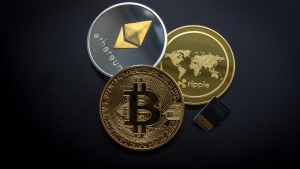Digital currencies are often referred to as cryptocurrencies, but that’s not necessarily the right name for the various types of digital currencies that exist today. The term altcoin was coined by Bitcoin developer Hal Finney, who went on to help create the first altcoin, the original code base of the Bitcoin project. Since then, the term has come to be used to refer to any cryptocurrency other than Bitcoin, which was the first and still leading digital currency.
Bitcoin is the first of many Cryptocurrencies. It is a digital currency that can be sent from person to person through the internet, and that can be used to purchase goods and services. Unlike traditional currencies such as dollars and euros, Bitcoin and other Cryptocurrencies are not controlled by governments or banks. Instead, they operate using a peer-to-peer network.
From time to time, you may hear the term “altcoin” thrown around, even though you may not know what it means. You may have seen pictures of people holding funny-looking things with computers on them, but you still don’t know what an altcoin is.
Bitcoin was the first cryptocurrency to be created, and it created a wave of new follow-up cryptocurrencies, called altcoins. These are cryptocurrencies that are developed to take advantage of Bitcoin’s success, usually by offering additional features. Over the past few years, these have been the most popular cryptocurrencies by market cap.
Altcoins, or alternative coins, have been around for a while now. They’re a cryptocurrency created to be used differently from one with a definite purpose. For example, the use of a global currency is a better choice for a coin that is not tied to a single country. A token designed for a specific purpose, such as a “tipping” coin, one used for a form of payment, or one that is meant purely for entertainment, is a good example of a specific purpose coin.
Altcoins is a term used to describe all the cryptocurrency alternatives that have been created beyond Bitcoin—and they’re doing quite well. They’ve been responsible for a big uptick in the number of new cryptocurrencies that have been announced. In July 2017, there were over 52 new cryptocurrencies in existence. As of today, there are over 200 altcoins, and that number will continue to grow.
Altcoins are alternative cryptocurrencies to Bitcoins, which are valued at less than the flat value of the US dollar. The first altcoin was launched in 2013, followed by many others. An altcoin is given a market capitalization, which is given by the number of Bitcoins its owner has.
It’s tempting to dismiss cryptocurrencies as just another speculative investment opportunity that can’t possibly have real-world value. After all, what, exactly, is an “altcoin”? Is it just another cryptocurrency? Or does it also refer to something else, like an alternative to bitcoin? … While the name “altcoin” may be new, the concept isn’t. Cryptocurrency has been around for years, but until recently, it had no real names. It was just “crypto” or “digital currency.” That’s all changed.
An altcoin is a digital currency that is 100% decentralized, trustless and has no centralized authority controlling it. Altcoins are usually based on Bitcoin but are designed to provide additional features that Bitcoin does not have.
An altcoin uses an alternative, decentralized method of verifying transactions. Like bitcoin, altcoins are digital currencies with no central bank or government controlling their creation, issuance, or distribution. However, there are differences between bitcoins and altcoins. Most notably, bitcoin is the original cryptocurrency, while altcoins are newer and more popular.
Altcoins are a subset of cryptocurrencies, but they’re a different breed. The first altcoins appeared in 2012, and they’re fundamentally different from Bitcoin and Ethereum. Bitcoin miners solve the Bitcoin algorithm to find a block. This block is then used as an “entry” to a Bitcoin blockchain, the ledger of Bitcoin transactions. To create a new Bitcoin block, miners have to expend a tremendous amount of computational effort. In exchange, they get a small amount of Bitcoin as a reward for their work.



